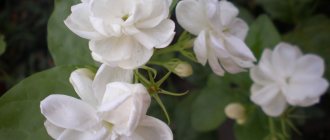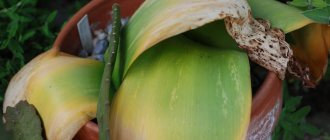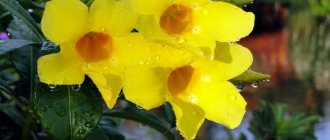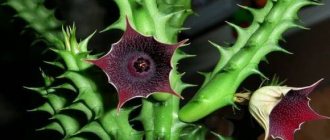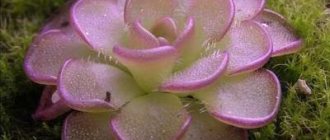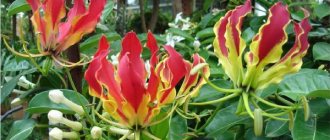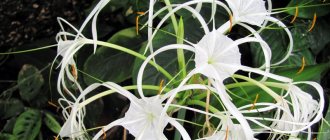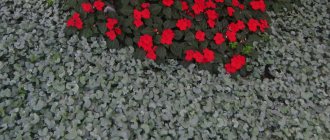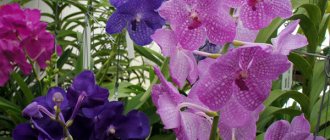- September 17, 2018
- Flowers
- Natalia Michaelis
Fragrant jasmine flowers can bloom throughout the summer and even winter. In general, the plant is a shrub or vine, on which flowers can be located both at the top and on the sides. Quite often, jasmine flowers are confused with mock orange. However, these cultures belong to completely different families. These plants only have a similar smell. In total, science knows 190 varieties of jasmine flowers. Some of them can even be grown in a winter garden and at room conditions. However, this will require you to follow some rules and recommendations. But before that, it’s worth familiarizing yourself in more detail with the general description of jasmine flowers, as well as its main varieties.
general description
Depending on the variety, jasmine can be evergreen or drop its leaves from vines or bushes. The trifoliate or pair-pinnate leathery leaves of jasmine flowers, the photo of which is presented in this article, can be located either on one side or opposite each other. The flowers grow singly and are collected in umbrellas or shields. The saucer-shaped corolla has a cylindrical tube. It can be yellow, white, or pink. In the photo with a jasmine flower you can see that over time the lower part of the stem of this plant begins to become woody. And the upper thin branches need additional support.
As mentioned earlier, science knows many varieties of this plant. It’s worth taking a closer look at the most popular of them.
Multi-flowered or finest
This plant is presented in the form of an evergreen shrub or drooping vine. In its natural habitat, this crop grows on the island of Kalimantan. On thin shoots there are simple oval-shaped leaves. The length of one leaf plate reaches 3.5 cm. At the very base, the leaves are heart-shaped, and their top is pointed. This plant blooms from January to March with white, large, fragrant flowers. This type of jasmine bush is quite often grown in our regions.
Features of terry mock orange
Terry mock orange differs from other types of garden jasmine in that most of its varieties have practically no smell, but at the same time it looks very chic, just look at the photos and you will want to decorate the garden with it, and therefore the question does not even arise - why it has become very popular among gardeners . Next to the mock orange, other flowers can be placed very beautifully, for example, a rose that has a red or purple color.
The most popular varieties of terry mock orange:
- Snowstorm is a low, early-flowering shrub with abundant white flowers that look like snowflakes; such shrubs can be used as a hedge.
- Ballet of moths - the flowers have a non-standard shape in the form of moth wings.
- Zoya Kosmodemyanskaya is a very frost-resistant type of jasmine, with racemose inflorescences of double white flowers.
- Girandole, Blid or Brit is a shrub with a dense crown and vertically growing branches, blooming profusely with milky flowers.
These varieties are no less popular. Schneeshturm - has arched branches and large double flowers up to 5 cm in diameter. Ballet moth is a shrub with interesting flowers that are shaped like moths. Minnesota snowflake - distinguished by very large and fluffy flowers; during flowering, the crowns literally bend under the weight of the flowers, such flowers make a very lush bouquet. Mermaid or Princess is a fast-growing mock orange, has a dense crown and lush flowering. Snowbel or Snow Beauty - has a pleasant subtle scent, blooms profusely in May-July with large flowers.
Shrenka or Black is a very tall shrub that resembles a tree; it has quite thick bark and many fragrant small flowers. Lemoine is a very frost-resistant jasmine, up to 3 meters high, spreading, and having an unusual strong aroma.
Jasmine Sambac
This plant is the national flower of Indonesia. The birthplace of the culture is tropical Asia. The liana can grow up to 6 meters in length. The shoots are pubescent and thin. The leaves are opposite and ovoid in shape. The leaf blades are pointed or blunt at the top, and in most cases rounded at the base. This type of jasmine flower blooms profusely between March and October. Fragrant flowers can be added to tea, giving the drink a unique taste. In most cases, this plant is used as a houseplant.
Jasmine is low
This flowering jasmine is presented in the form of an evergreen shrub that grows up to 2 m in height. The leaves reach 2.5 cm in length. They can be elliptical or ovoid in shape. The leaf blades are dark green on top and light green underneath. The inflorescence, which is presented in the form of an umbrella, has fragrant flowers with a yellow corolla. The diameter of the flower and the corolla tube is equal to one centimeter. The jasmine color of this variety lasts throughout the summer.
Jasmine diseases and their treatment
The sweet jasmine aroma attracts only beneficial insects, but repels pests. But due to non-compliance with the rules of care, the shrub can become sick, and its branches can be attacked by spider mites, scale insects or aphids.
While only individual branches are affected, it is necessary to treat the jasmine with a soap solution. In case of significant damage, use an insecticide.
Jasmine leaves sometimes become deformed or even begin to fall off. This is how the plant signals that it does not have enough moisture, therefore, it is worth increasing watering. Such signals also indicate an excess of sunlight. Correcting the situation is quite simple: transplant the bush to another place or create artificial shading in the form of a fence or canopy. In turn, darkened buds mean that jasmine does not like dry and too warm air.
Air and lighting temperature
Bright diffused light is the main condition for care. The indoor view of the jasmine flower should be on the east or west side. If this plant will constantly stand on a southern windowsill, then it must be protected from direct sunlight. Otherwise, burns may form on the leaves.
In warm weather, it is recommended to place the potted plant on the balcony, loggia or garden. In this case, you should choose a place that is protected from wind and sunlight.
As for air temperature, jasmine is undemanding to this condition. However, it is best to keep it indoors where the air temperature is from 18 to 24 degrees. In order for the crop to bloom long and profusely, in winter it is recommended to grow it in a cool room where the air temperature is within 10 degrees. If this condition is not met, the bush will begin to become abundantly overgrown with greenery, but flowers will not form. But if the room temperature in winter is too high, then the room must be regularly ventilated, but the crop should be protected from drafts.
Features of home care
Growing polyanthus jasmine in general does not cause problems, but there is one important feature that you need to know about. To achieve active flowering, the plant must ensure a change in phases of active vegetation and subsequent dormancy . Therefore, the conditions that need to be created for Jasminum polyanthum in winter and summer are fundamentally different.
Air temperature and humidity
During the period of active sap flow (from late winter to late autumn or until flowering is completed), multifloral jasmine prefers moderate warmth. The ideal temperature for a flower will be the range of +20…+25°C. If the air warms up more, the plant develops somewhat worse; stress also causes a cold snap to +15°C.
But still, experienced flower growers claim that the following factors play a much more important role than temperature as such for jasmine:
- absence of drafts (you cannot place the pot near a window that opens frequently, or in close proximity to the front door);
- distance from a source of intense heat (for example, household heating appliances);
- good air humidification (not to be confused with dampness, jasmine cannot tolerate it);
- stable thermal indicators day and night (no sudden changes);
- correct light mode.
In the summer, a pot of polyanthus jasmine can be taken out to the balcony or even taken to the country : outdoors, the plant has much less chance of drying out or, conversely, freezing than in a stuffy apartment with the air conditioner turned on periodically.
Did you know? The white jasmine flower is the official symbol of Pakistan, and, along with the Rafflesia Arnoldi and the moon orchid, has the same status in Indonesia.
A significant role here is played by the fact that the very name of the plant (“yasmin”) is translated from Persian as “gift of God,” and for Muslim states this is of great importance.
The wintering period involves a decrease in temperature to +10...+12°C, so if you have a closed balcony, it can be used to transfer a flower there .
At the same time, watering is reduced to a minimum, fertilizing is stopped completely, and a place is chosen that is as shaded as possible.
Low air humidity is one of the likely reasons why Jasminum polyanthum does not bloom, or flowering is poor and very short-lived . In hot weather or winter, if the flower is in a heated room where there is no special humidifier, it is necessary to increase the humidity in another way.
You can spray the above-ground part of the plant with water from a spray bottle at least twice a day - but this is not very convenient, moreover, this technique cannot be used during the flowering period, as well as during the period when the flower is intensely lit, that is, exactly when it is most needs hydration.
Watering and air humidity
Jasmine needs high humidity. When caring for this plant, air humidity can be increased in three ways:
- The bush will have to be sprayed daily. For this, only settled water at room temperature is used.
- It is best to place a flower pot on a tray with damp expanded clay, moss or peat.
- An additional humidifier can be installed in the room.
If the bush has bloomed, it is not recommended to spray it at this time. In winter, jasmine, which is grown in a cool room, also does not need spraying.
In autumn, summer and spring, the crop is regularly watered with water, which must first be left to sit for 24 hours. Watering is carried out only after the top layer of soil in the pot has dried. The flower that overwinters cool in winter is watered less in the fall, and in winter you just need to make sure that the earthen lump in the pot does not dry out. Under no circumstances should you overwater jasmine.
Fertilizer and replanting
If the plant was just purchased from a flower shop, then it must be transplanted into a suitable container. This should be done a couple of weeks after purchase, as the plant is adapting to new conditions these days. Soil for replanting is sold in specialized stores. But you can also cook it yourself. To do this you need to mix:
- 3 parts mixture for flowering plants;
- 1 part azalea mixture;
- 1 part sand;
- a small amount of vermiculite.
All these mixtures can also be purchased at a flower shop. The result is loose, acidic soil. But if it is not possible to purchase such compositions in a store, then you can also use other types of soil:
- 1 part clay-turf soil;
- 1 part leaf soil;
- 1 part peat;
- 1 part sand.
It is imperative to lay a drainage layer on the bottom of the pot, for which expanded clay is used. After this, a small amount of earth is filled in. The young plant is transplanted using the transshipment method so as not to disturb the root system. In this case, the bush takes root better and faster in a new place. Finally, the substrate is poured into the voids near the plant, compacted a little, and also watered.
In order for jasmine to bloom and develop well, it requires additional nutrients. To fertilize the crop, you can use complex mineral fertilizers, as well as organic matter.
After the dormant period, jasmine should be fed for the first time in mid-May. To prepare a solution per 1 square meter, you need to dilute it in 10 liters of water:
- 30 g superphosphate;
- 15 g of potassium sulfur;
- 15 g urea.
The second time the crop should be fed after it blooms. To do this, use 1 glass of wood ash per 1 square meter, as well as 30 g of superphosphate. In August, feeding stops as the plant prepares for winter.
If you grow one plant indoors, then it is best to use special fertilizers intended for flowering crops as fertilizing. They feed the flower 2 times a month.
It is recommended to plant an overgrown, middle-aged plant along a support, tying shoots to it. Before the period of active growth, around January, in the middle of the bush it is necessary to cut out underdeveloped, thin and dry shoots. Long branches are shortened by a third. Thanks to this procedure, additional shoots grow on the side, on which flowers form. Jasmine Sambac should be pruned no more than once every 3 years.
Gardeners to gardeners
We are accustomed to calling jasmine an ornamental shrub with dark green leaves and white, cream or golden (depending on the variety) flowers with an amazingly delicate, intoxicating aroma.
They hang from the branches in clusters, covering the entire bush with snow-white-golden foam. Sometimes you can’t even see the leaves under the flowers.
However, the name “jasmine” is actually used by completely different tropical and subtropical plants belonging to the Olive family. In the northern regions they are grown exclusively as indoor and greenhouse crops.
And the bushes growing on our plots are called “mock oranges” and belong to the Hydrangeaceae family. But since we are accustomed to the fact that mock orange is garden jasmine, let’s call it that in this article.
According to the flowering period, varieties of garden jasmine can be early, middle and late. It lasts no more than three weeks for each plant. However, if you plant all three species in your garden at once, you can extend this period to two months.
After all, by the time the early varieties of jasmine begin to wilt, the flowers on the middle one begin to bloom, and behind it the late varieties begin to bloom.
However, you can prolong the pleasure of contemplating a blooming and fragrant garden by planting long-flowering varieties of jasmine, which were created through the efforts of domestic and foreign breeders.
In this article we will present you the best long-flowering varieties of jasmine from our collection, which today are the best sellers on the world market of ornamental crops.
In addition, we will tell you about the features of growing such jasmine and consider options for using long-flowering jasmine in the design of a flowering garden.
THE BEST LONG-FLOWERING JASMINE VARIETIES FROM OUR COLLECTION
Today there are not many of them. They differ from ordinary garden jasmine in their long flowering period - from the end of the first ten days of June to the end of July.
First of all, we want to offer you a unique new product on our market - a French selection variety Lime Stone .
It blooms from mid-June to the end of July - about 1.5 months. This compact, vertically growing shrub, up to 2 m high, during the flowering period is entirely covered with very large (up to 6 cm in diameter) snow-white semi-double flowers with a golden center.
Flowers are collected in brushes of 7 - 9 pieces. and exude an unusually subtle, wonderful aroma that will spread not only to your garden, but also to neighboring areas, causing a feeling of true bliss in everyone around.
Pollinating insects flock to this sweet, pineapple-like scent. Be sure that at the same time they will visit other plants in your garden, pollinating them and helping to grow a good harvest.
In addition, we offer you two more long-flowering varieties of jasmine from our collection:
White bouquet . A variety from the collection of the famous French breeders Lemoine. This is the most beautiful long-blooming (more than 1.5 months) variety with dense, dazzling white flowers, up to 5 cm in diameter, exuding a wonderful aroma reminiscent of the smell of a blooming magnolia.
Its bush looks like a snow-white cloud hovering above the ground, captivating the eye with this wonderful picture and riveting it to the place with a divine smell.
Lady in white . Another stunning long-flowering French variety of garden jasmine, selected by Lemoine. Belongs to late dwarf varieties. The height of the bush does not exceed 1.4 m, and the diameter is 1.2 m.
It blooms for more than a month, starting in the third decade of June. Very good for creating a hedge or decorating a utility area or some unsightly places on your site.
The flowers are double and semi-double, pale white with a fringed edge. The aroma is as strong, subtle and amazingly pleasant as the two previous varieties.
In general, all varieties of Lemoine selection are very highly valued all over the world for their stunning decorativeness and unusually strong, subtle, simply delicious aroma!
All three varieties from our collection are very unpretentious, are highly frost-resistant and are practically not affected by pests.
You can easily check this by purchasing seedlings of these varieties from us today!
Believe that these long-flowering varieties of jasmine will bring you true pleasure!
SOME FEATURES OF GROWING LONG-FLOWERING JASMINE VARIETIES
In order for long-flowering varieties of garden jasmine to grow well and bloom in full force, it should be planted only in very sunny areas. Any shading will lead to weakening of flowering and loss of decorativeness of the bush.
Garden jasmine needs very fertile, loose soil, rich in organic matter with a neutral reaction environment (pH 7.0). Only on these will it bloom in full force.
The plant does not tolerate stagnation of melt and rain water, as well as close groundwater, so it cannot be planted in low-lying areas. You can provide low mounds, 30–40 cm high.
Does not tolerate jasmine and heavy acidic soils. These must first be neutralized with dolomite flour (2 kg per 5 sq. m of plantings), and then, when digging the area, add (per 1 sq. m): 2 buckets of rotted manure, 2 buckets of sand, a bucket of leaf soil and a bucket of wood ash.
In addition, during digging, add phosphorus-potassium fertilizers (superphosphate and potassium sulfate in accordance with the dosages indicated on the package).
Saplings of long-flowering garden jasmine are planted at a distance of 2 m from one another. In the case of creating hedges, the distance is reduced to 1 m.
Planting holes are dug with a diameter and depth of 50 cm. At the bottom of each planting hole, drainage from broken brick or crushed stone is laid in a layer of 10 cm.
For long-lasting lush flowering, long-flowering varieties of garden jasmine need more nutrition and moisture than ordinary varieties.
During the summer period, 4 feedings are carried out.
The first - a solution of urea (2 tablespoons per 10 liters of water) for each bush - give to the plants as soon as the snow melts.
The second time - during the budding period, feed the bushes with slurry (at a concentration of 1:10). After 2 weeks, repeat the same feeding.
In the fall, apply some ready-made mineral complex under the jasmine bushes for autumn feeding of ornamental shrubs.
Water weekly (3 watering cans for each bush). In hot weather, water more often. Carry out this operation either early in the morning or late in the evening at the root so that moisture does not get on the flowers and leaves. With a lack of water, flowering can quickly stop.
Mulch the tree trunks with straw or sawdust to better retain moisture in the ground. And weeds will not grow under the mulch layer.
In early spring, before the sap begins to flow (late March), carry out sanitary pruning, cutting out all old, broken, weak branches and branches growing inside the bush.
Shorten all branches by 1/4. Weak and old (over 8 years old) cut out at the base. Leave 6 - 7 of the strongest branches. After flowering ends, remove faded branches without annual growth.
Jasmine is highly frost-resistant, so it is not covered for the winter. However, in the first year after planting, the tree trunk circles should still be mulched with dry fallen leaves in a layer of 30 cm.
LONG-FLOWERING JASMINE VARIETIES IN GARDEN DESIGN
Garden jasmine looks great in compositions with other beautifully flowering shrubs - hydrangeas, Kuril tea, dogwood, viburnum, park roses, lilacs. Together with them you can create simply magnificent shrub mixborders.
Long-flowering garden jasmine also combines beautifully with climbing crops: actinidia, roses, clematis, and ornamental grapes.
European landscape architects always use long-flowering jasmine when creating compositions in a rural style, planting it near wattle fences, gazebos, as well as near bridges of streams and small rivers.
Long-flowering jasmine looks absolutely stunning when planted near artificial and natural ponds next to weeping willows.
Tall bushes of double garden jasmine with snow-white flowers look great against the background of the wall of a house made of red or dark cherry (there are many of these in England) bricks.
We recommend that you plant bushes of beautiful and long-blooming jasmine in the recreation area near the bench in order to fully admire this unearthly beauty and enthusiastically inhale its fabulous aroma!
Reproduction methods
The plant can be propagated by two methods:
- cuttings;
- air layering.
To propagate a plant by cuttings, they must be cut from an adult specimen. The length of the cuttings should be at least 12 cm. The cuttings should also have 4-6 leaves. Immediately before planting in the soil, for better rooting of the cuttings, it is recommended to treat it with Kornevin or Heteroauxin. You also need to pour a mixture of sand and leaf soil into the container, where the cuttings are then planted, and cover them with a glass container or polyethylene on top. The cuttings should take root in a month and a half. They must be kept in a room with an air temperature of at least 18 degrees. They also need to be watered regularly.
As for propagation by air layering, it is necessary to place a small pot of soil near the mother plant in which the previously prepared air layering will take root in the future. For these purposes, a small cut must be made on the lower stem of the bush, which must be pressed to the soil using a pin or wire. The soil where the cuttings will take root must be constantly kept slightly moist. As soon as new young shoots appear in this container, the cuttings can be cut off from the mother plant.
In conclusion, it is worth noting that jasmine can be grown not only in open ground, but also indoors. At the same time, caring for this crop is very simple, which even inexperienced gardeners can do.
Methods for propagating jasmine shrubs
There are 3 main ways to propagate mock orange (garden jasmine). The first is by dividing the bush, but in this case you need to have the bush itself. What if he is not there? You can try to buy it or ask your neighbor. The difficulty is that mock orange seedlings are not sold everywhere, and your neighbors may well not have them.
It’s easier to use layering, but again, for this you need to have a bush.
The easiest way is propagation by green cuttings. Finding a green jasmine cutting in the summer is much easier than finding the seedling itself.
You can propagate mock orange and jasmine by seeds, which are sown in a school for growing immediately after collecting seeds (those purchased before sowing are stratified in damp sand in the refrigerator for 3-4 months). They will grow in a year, but will not bloom soon, maybe in 4-5 years. Double forms cannot be propagated in this way (they usually grow into non-double plants); they can be propagated exclusively by cuttings, or by dividing the bush, this is the most reliable.
